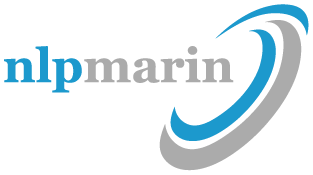NLP and Professional Success

The Map is Not the Territory
January 9, 2009
Personal Change and NLP
January 9, 2009NLP and Professional Success
by Bob HoffmeyerFirst published in Marin Scope newspapers (2003)
Neuro-Linguistic Programming (NLP) has a wide range of very useful applications in human relations––essentially anywhere that two or more people are interacting with a common objective. This is because, at its core, NLP is about understanding both how we human beings create meaning in life and the behavior we engage in as a result of that created meaning. With this understanding, we are then able to act with greater flexibility and resourcefulness and are able to more elegantly influence others with integrity.
Briefly stated, the professional support you can expect from NLP can be conveyed in four words: connection, understanding, communication, and influence.
NLP begins with the observation that each of us has a unique internal map of reality and that it is this map that we all operate from most of the time; even when interacting with others or the world “out there.” The skill sets in the NLP model enable us to get access to these internal maps, and to understand them. As a result, we are more able to connect with others in deeper ways (appropriate to the context) and to then communicate with them in the language of their map. This makes it easier for us to understand them and they to understand us. Deeper connection and understanding, in turn, affect our ability to influence with integrity toward the end of accomplishing our common objective.
Studying NLP involves learning a wide variety of perceptual and behavioral skills. Perceptual skills have to do with broadening the range of what we notice. Behavioral skills have to do with increasing our flexibility in what we do; how we respond. Beyond these two broad distinctions, there are a variety of ways to group these skills. In the world of business, the following categories are useful.
Nonverbal Communication. For the most part, these are messages coming from outside of conscious awareness and are an essential part of what the person is trying to convey. This skill set involves both noticing and utilizing the nonverbal messages.
Calibration. This involves first noticing physiology (body movements, eye movements, voice variations, etc.) and then relating it to a unique internal state or experience the speaker is having. When combined with the words the speaker is using this assists us to determine congruency in the message being conveyed. This skill also assists us to usefully adjust our responses throughout the interaction.
Rapport. Rapport skills cover a broad range of perceptual and behavioral abilities that enable deep connection with those with whom we are interacting. This connection is with both conscious and (often more importantly) unconscious aspects of the individual. Rapport does not necessarily mean agreement. It is closer to connection or link-up. Without connection, whatever else we do in our interaction with others cannot succeed. The success of any interaction is directly related to the degree of rapport or connection.
Listening. The words that we use have unique meaning to s. Realizing this and working with the words the other uses significantly enhance connection, understanding, and our ability to influence. Discerning the meaning that the word the other uses has for them rather than substituting our word and meaning (in the assumption that we know what they mean) is often critical to avoiding misunderstanding.
Information Gathering. This involves precise utilization of questions which leads to greater clarity and to more quickly getting to useful information and avoiding that which is extraneous or misleading.
Noticing Objections. This is what NLP refers to as “ecology.” It has to do with identifying, in advance, the objections (often unconscious) that will prevent or sabotage accomplishing the ostensibly agreed objective.
Speaking. The NLP communication toolbox contributes to effectiveness in communication because it provides the speaker with the skills and tools to take responsibility for both what is said and for what is heard. Through utilization of the skills listed above, the speaker is able to assume the full responsibility for ensuring that real communication actually takes place. Whether one-on-one or in front of a group, the speaker is able to adjust the way he or she is speaking to ensure that it can easily be taken in and understood by the audience.
All of the skills referred to are interrelated and are used in combination. They are used, first, to become aware of the unique way in which those we are working with take in information, process it, and store it. Second, these skills enable us to adjust our presentation and, therefore, our interaction with the other's map. As a result, the outcome of the interaction will more closely match the desired outcome, with greater ease and mutual satisfaction.
In the original research that led to the development of the NLP model, highly effective individuals were observed working. While they work in different fields and used different methods, one ability stood out as being that which made the difference between excellence and effectiveness or the lack of it. Highly effective individuals all had the ability to respectfully step onto the map of the people they were working with and do their work from there.
Training in the NLP model is both a human relations skills training and a program of personal development. Learning new skills and developing oneself go hand in glove, and most often both are required for greater success. Following are examples of ways NLP can contribute to professional success:
• Greater ability to understand and respectfully influence others.
• More clearly know where you want to go and how to get there.
• Quickly establish rapport with colleagues and clients and maintain it.
• Resolve conflict and build effective, aligned teams.
• Teach to your students' best learning style.
• Avoid "losing the deal" because of simple misunderstanding.
• Develop effective people skills.
• More quickly get to the useful information and avoid getting sidetracked.
• Shift your own mental state and stay optimally resourceful in any situation.
• Eliminate internal obstacles to success.
• Acquire the success strategies of others.




